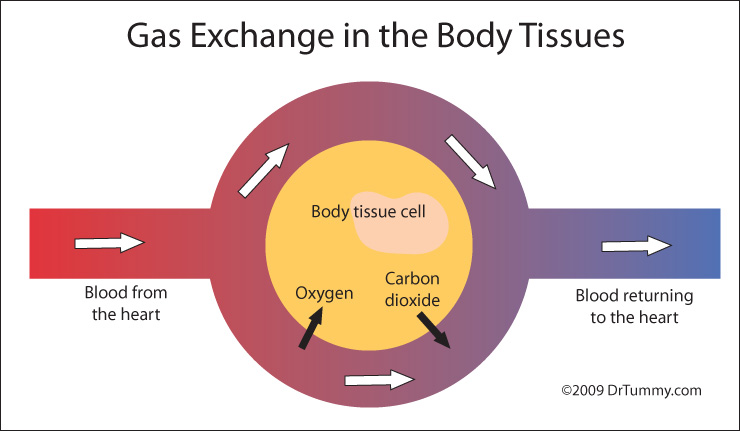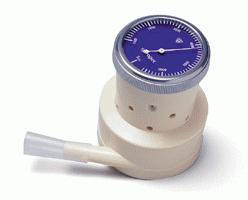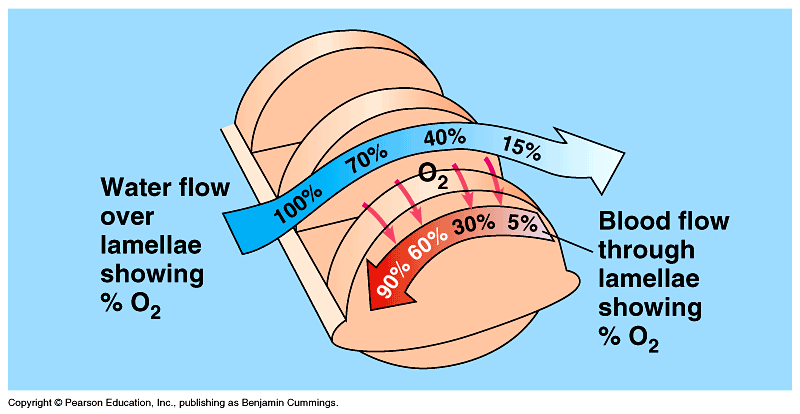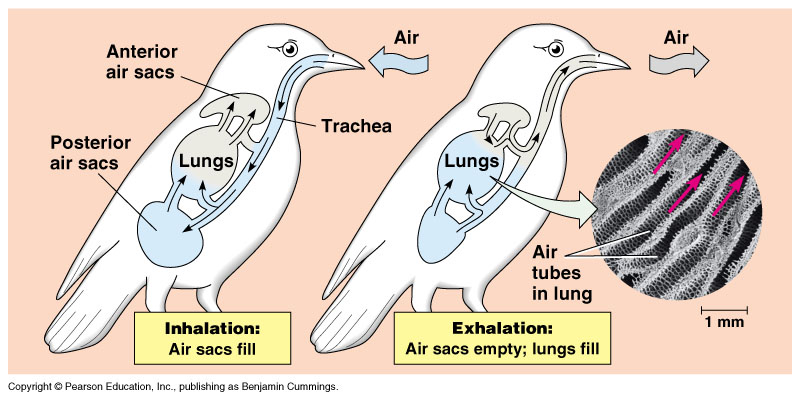C3.3 - Mechanisms of Breathing
Breathing
- breathing / ventilation: the process of moving air into and out of your lungs
- Air will flow from high pressure to low pressure
- Associated muscles:
- intercoastal muscles (between ribs)
- diaphragm
- Statistics
- Humans breathe 15 times/min. on avg.
- >21,000 breaths / day
- Lungs about size of football
- Total capacity of lungs: 6 L avg.
- 0.6 L of volume used on normal breath
- Humans can use 20x more oxygen when exercising compared to rest
- Humans breathe 15 times/min. on avg.
Breathing Mechanism and Diaphragm

- diaphragm: large dome-shaped sheet of muscle that forms bottom wall of chest cavity
- Inhalation
- Intercoastal muscles contract lifting rib cage up and out
- Diaphragm contracts and pulls downwards
- Increases volume of lungs → reduces air pressure in alveoli
- Air moves in from high pressure to low pressure
- Exhalation
- Intercoastal muscles relax, rib cage returns to resting position
- Diaphragm relaxes and moves upward to normal position
- Decreases volume of lungs → increases air pressure in alveoli
- Air moves out from high pressure to low pressure
Gas Exchange Composition

- Inhaled air
- 20.94% oxygen
- 0.04% carbon dioxide
- 79.02% nitrogen and other gases
- Exhaled air
- 16.49% oxygen
- 4.49% carbon dioxide
- 79.02% nitrogen and other gases
Lung Capacity

Spirometer: Device used to measure lung capacity
- tidal volume (TV): air inhaled and exhaled in a normal breath.
- inspiratory reserve volume (IRV): the additional volume of air that can be taken in
- expiratory reserve volume (ERV): the additional volume of air that can be forced out of the lungs
- vital capacity (VR): total volume of air that can be moved in or out of the lungs
- residual volume: amount of gas that remains in the lungs no matter what
- respiratory efficiency: rate at which oxygen can be transferred to the blood
Counter-Current Flow: Fish Gills

- Blood vessels of lining gills flow in opposite direction to movement of water
- Increases fish gill efficiency by using dissolved gas concentration gradient
- Most oxygen depleted blood meets most oxygen depleted water
- Oxygen diffuses in by simple concentration gradient
- Blood continues to pick up oxygen as concentration increases
Counter-Current Flow: Birds

- No alveoli or diaphragm
- Anterior and posterior air sacs branch out from lungs like bellows
- No gas exchange occurs in air sacs
- parabronchi: tubes acting as respiratory surfaces in birds
- Expansion and contraction of air sacs ventilate lungs
- Air circulates through lungs and air sacs
- Fresh air in contact w/ lungs at all times
- More efficient than humans